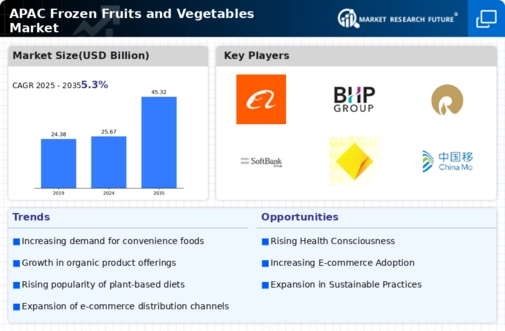Market Trends
Key Emerging Trends in the APAC Frozen Fruits Vegetables Market
There have been notable trends seen within the APAC frozen fruits & vegetables industry which portray shifting preferences based on consumer choices along with eating routines across Asia Pacific region. One important trend has been an increasing demand from busy lifestyles consumers who are looking out for convenience foods that are healthy also. Rapid urbanisation along with enhanced per capita income levels together with alteration of diets has led to growing preference towards convenient ready-to-eat foods including frozen fruits plus veggies. With longer shelf life, easy storage options as well as fast preparation time; these make busy individuals or families choose them for a healthy bowl without having any compromise on quality-ness or freshness.
Frozen fruits along with vegetables’ consumption is rising significantly within APAC due to growing interests in health plus wellness among its people who want balanced diets emphasizing on organic products. As more people get enlightened about how they should consume different types of fruits plus veggies since it contributes positively towards their health status; there will always be a demand for frozen produce. These fruits as well as vegetables are normally harvested at their peak ripeness and then preserved through freezing which helps in locking all the vital vitamins, minerals and antioxidants making them convenient way of nutrition for those seeking to increase their plant based food consumption levels.
Another notable trend in APAC’s frozen products industry is increasing popularity of premium plus value added goods that offer increased convenience, taste & flexibility. Examples of such enhanced frozen produce include pre-cut, pre-washed vegetables which are ready to cook, fruit blends’ smoothie packs and fruit cups with added flavors, nutrients plus functional ingredients. This trend is for individuals who desire simple but creative ways of using these frozen fruits and veggies in their courses or snacks; it also facilitates customization or personalization to accommodate different individual tastes.









Leave a Comment